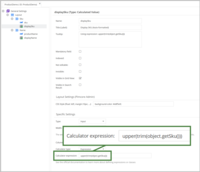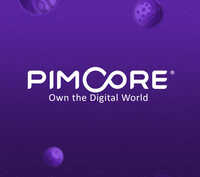When we contrast user experiences from the early days of online product sales with the current landscape of eCommerce, it's clear that there has been a significant transformation. Digital commerce has undergone immense evolution since its inception, largely influenced by evolving customer demands. Companies, prioritizing the needs of their customers, are continuously innovating to deliver superior user experiences, aiming to surpass customer expectations and tap into new revenue streams.
With customer expectations evolving daily and new channels emerging monthly, many companies are reconsidering their core frameworks to execute digital commerce with a focus on improved adaptability and the imperative for ongoing innovation. This evolution has forced the emergence of headless architecture for product information and eCommerce sales channels.
A headless architecture based on APIs offers companies exceptional flexibility through its separated user interface approach. CIOs, CTOs, or technical experts tasked with enhancing the digital commerce experience should explore the headless option.
The customer-centric approach
The evolution of digital commerce platforms from their foundation to the present day has been remarkable. Initially, it began with basic shopping cart integrations, followed by specialized packaged software offering features like:
- product catalog management
- search functions
- customer accounts
- payment gateway integration, and
- order management.
Over time, additional capabilities such as mobile commerce, wish lists, personalized recommendations, flexible delivery options, and customer loyalty programs have transformed eCommerce platforms into robust alternatives to physical stores. They have become integral, not only for B2C companies selling directly to consumers but also for manufacturers and distributors engaged in B2B commerce.
Yet, as mobile commerce, social commerce, data analytics, and an array of marketing technologies continue to expand, companies recognize that traditional eCommerce platforms are falling behind in terms of flexibility and user interface innovation is needed to enhance the overall competency and user-friendliness of their entire digital commerce ecosystem.
As a result, companies may encounter difficulties in:
- Expanding into the global market and accommodating increasing SKUs, web traffic, and conversions at scale.
- Facilitating multichannel content delivery across smartphones, wearables, and IoT devices (known as "things commerce") to deliver compelling user experiences and foster lifelong customer relationships.
- Embracing new channels, emerging trends in digital commerce, and integrating fresh capabilities seamlessly without disrupting existing operations, all in an effort to differentiate themselves from marketplaces and creatively engage with customers.
Because technology serves as a crucial tool in addressing these challenges, it's also being leveraged to unlock fresh opportunities in the digital commerce realm, aimed at optimizing customer experiences beyond mere product catalogs.
Consider engaging product finders and customizable product configurators. Additionally, observe how modern digital transactions occur seamlessly across various touchpoints, ensuring a unified omnichannel experience for customers. The landscape for digital commerce platforms has undergone a profound transformation.
The fundamental change in digital commerce
In a world characterized by bimodal approaches and a strong emphasis on products, companies are seeking to modularize their digital platforms to foster innovative customer experiences and enhance agility. Therefore, what alternatives do companies have for embracing platforms constructed from modular services rather than relying on a single monolithic solution?
An API-driven digital commerce platform is the optimal method for selling digital products and services. It's an excellent option for businesses serving various channels with a wide range of diverse touchpoints, including physical locations. Alternatively, it suits companies with distinctive business models that traditional monolithic commerce applications cannot accommodate without costly customizations.
A headless commerce approach, leveraging APIs, speeds up deployment and offers flexibility by separating presentation from logic. This reduces time and costs. It allows integration with custom apps and IoT devices, enabling tailored user interfaces and enhanced management. This approach can accommodate the following endpoints:
- Digital storefront
- Mobile commerce
- Social commerce
- Digital marketplaces
- In-store experiences (kiosks, magic mirrors, and more)
- IoT and wearables
- Augmented reality (AR) and virtual reality (VR) immersive experiences
- Conversational commerce (virtual assistants, chatbots, and more).
The capability to connect with various user interface endpoints empowers organizations to innovate according to their customers' requirements.
Comparing traditional commerce with headless commerce
Businesses transitioning from rigid eCommerce platforms are embracing a headless architecture to quickly innovate in customer experience. Here's why an API-driven headless digital commerce model can be superior to traditional commerce solutions:
Monolithic software architecture represents a conventional method characterized by:
- tightly interconnected commerce functions
- manual configuration file updates, and
- server-side state management.
It's complex and demands significant effort to alter. Often, the inability to promptly introduce new features can be frustrating. Moreover, the ongoing expenses of upgrades and the restricted adaptability to foster innovation pose significant hurdles in sustaining a digital commerce enterprise.
The benefits of a headless approach to commerce
Headless commerce offers outstanding capabilities for crafting or inventing distinctive experiences. Its primary advantages include:
- Flexibility
Integrate with any API-based user interface as per your business needs. - Speed
Rapidly modify existing UI or implement new UI in alignment with the business logic of the commerce platform. - Consistency
Preserve your UIs in case your commerce engine is changed, enabling you to maintain continuous, consistent, uniform customer experience across multiple frontends (app/shop/POS...). - Innovation
Allows you to attach multiple heads to your headless commerce architecture by exposing a set of APIs that offer a consistent set of functionalities to a wide variety of user experiences.
Use case: when you have to enable a set of UIs such as intelligent devices, voice assistants and other evolving channels, this is the perfect solution. - Low risk
Does not require you to entirely scrap the existing solution, allowing you to incrementally add it to any existing commerce deployment, both commerce services and UI applications.
Adopting headless digital commerce doesn't have to be a complete overhaul—it can be implemented gradually, allowing you to transition your current system into a fully headless API-based commerce solution. The flexibility of this approach means you can determine the most suitable starting point for implementation. Additionally, you'll need to pinpoint areas where implementing a headless approach can extend your commerce capabilities or create distinctive customer experiences.
Determining your need for headless commerce
Advocating for headless commerce might present challenges, but if your existing platform:
- lacks flexibility
- is slow to evolve, and
- cannot support multiple touchpoints through APIs,
then headless commerce is the solution. Here are some factors to consider when making the case for it:
- Marketplace integration
Selling on marketplaces like Amazon or Google broadens your customer base. These platforms offer easy API integrations, making headless commerce a logical choice for seamless integration. - Retro-fitting eCommerce into existing systems
For adding commerce features to your WCM-based system without extensive redevelopment, integrating digital commerce services via a headless approach is ideal. It provides flexibility to expand UI components without disrupting the underlying commerce infrastructure. - Integrating headless commerce in IoT
IoT-enabled devices simplify customer interactions in "things" commerce. With headless commerce, you can integrate specialized services into IoT devices, providing on-demand access to product information and personalized experiences through commerce APIs. - Social experience
Social media platforms present vast marketing opportunities. Integrating commerce services enables new revenue streams. With headless commerce, you can customize features for effective product marketing on social media. - Progressive web applications (PWA)
PWAs blend web technologies with native app-like experiences, benefiting digital commerce by offering richer experiences and faster time-to-market at lower costs. Headless architecture, coupled with versatile APIs like GraphQL, is the best approach for building PWAs.
Wrapping up
Headless commerce architecture isn't suitable for every business. It demands robust architectural governance and a high level of digital maturity throughout the commerce ecosystem. It's not a simple plug-and-play solution, so the decision to adopt it should be made thoughtfully.
Overall, when considering the headless approach, it's essential to assess the relevance of an API-based commerce model for your business by evaluating the required flexibility for content and commerce capabilities, fostering innovative customer experiences, and expanding customer touchpoints.
This article is a summary of Pimcore's Reimagine Digital Commerce with a Headless Architecture whitepaper. We have pulled key points for you to easily digest.



























